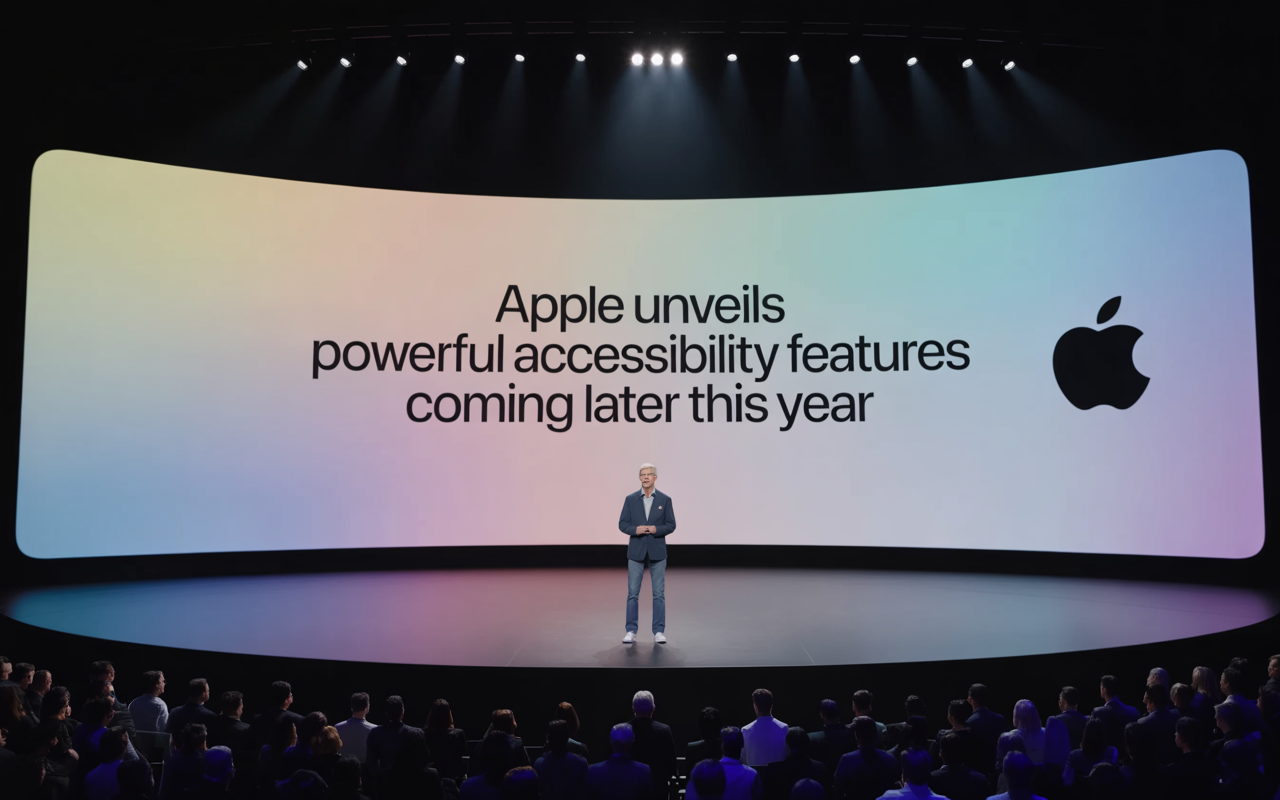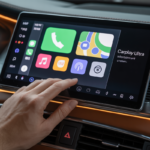Apple Unveils Powerful Accessibility Features Coming Later This Year
Enhancing Inclusivity Across iPhone, iPad, Mac, and More
In a groundbreaking move toward digital inclusivity, Apple unveils powerful accessibility features coming later this year, aiming to reshape how individuals with disabilities interact with technology. The tech giant continues its tradition of prioritizing accessibility by integrating cutting-edge features across iOS, iPadOS, macOS, and visionOS, making its ecosystem more usable for everyone—regardless of physical, cognitive, or sensory ability.
This announcement has already made waves across the tech and accessibility communities, setting new industry standards for inclusive design. Let’s dive deep into the most exciting updates and what they mean for users around the world.
Assistive Access Mode: A Simplified Interface for Cognitive Accessibility
One of the most talked-about updates in Apple’s announcement is the new Assistive Access mode, designed specifically for users with cognitive disabilities. This feature simplifies the iPhone and iPad interface, providing a cleaner, more focused user experience.
Assistive Access offers customized layouts for essential apps like Phone, Messages, Camera, Photos, and Music, displaying them in a large, easy-to-navigate format. It reduces cognitive overload by removing unnecessary elements and allows caregivers to customize settings according to each user’s needs. This mode is a game-changer for users who struggle with complex interfaces, enabling them to use devices independently and confidently.
Eye Tracking for iPad and iPhone
Another revolutionary addition is Eye Tracking, a feature that brings hands-free control to iPad and iPhone. This is Apple’s first in-house eye tracking technology that allows users to navigate the interface, activate buttons, and perform gestures—all using only their eyes.
This feature is especially beneficial for individuals with motor disabilities such as ALS, cerebral palsy, or spinal cord injuries. By simply looking at their screen, users can now interact with their devices in a way that was previously only available through expensive third-party hardware. This technology is powered by machine learning and uses the front-facing camera, requiring no additional setup or accessories.
Music Haptics for the Deaf and Hard of Hearing
In a bid to make music more accessible, Apple unveils Music Haptics, an innovative feature that allows the deaf and hard-of-hearing community to experience music through touch. Using the iPhone’s Taptic Engine, Music Haptics translates audio into a rich palette of tactile vibrations and rhythms.
This feature works with millions of songs on Apple Music and can be used with any track. For those who cannot hear the nuances of a song, Music Haptics brings an immersive sensory experience that fosters emotional connection through physical feedback. It’s not just a utility—it’s an artistic bridge for inclusive expression.
Vehicle Motion Cues: Combating Motion Sickness in Transit
Many users experience motion sickness when using their devices while in a moving vehicle. To address this, Apple is introducing Vehicle Motion Cues, a subtle and smart feature that adds animated dots to the screen edges to indicate real-time vehicle motion. This visual cue helps sync the user’s visual field with their sense of motion, reducing the disorientation that causes motion sickness.
This is particularly helpful for neurodivergent users or those sensitive to motion, making it easier to read, game, or work while traveling.
Voice Control and Live Speech Enhancements
Apple has also enhanced its Voice Control and Live Speech features. Voice Control now includes phonetic suggestions for text editing, enabling users with speech differences to correct misrecognized words more efficiently. Users can simply speak the intended correction, and Apple’s intelligent system will provide suggestions based on phonetic context.
Meanwhile, Live Speech, introduced in iOS 17, gets a more personal touch with customizable phrases and expanded language support. It allows users who are nonverbal or have speech impairments to type and have their words spoken aloud during phone or FaceTime calls.
Magnifier and Vision Accessibility
Users with vision disabilities are also getting new tools. The Magnifier app is receiving updates such as Point and Speak, which reads text aloud when the user points at it with their finger. Apple is also introducing a feature where users can describe images using voice commands or via screen reader enhancements, making visual content more accessible than ever.
For Apple Vision Pro, Apple is incorporating new spatial audio and zoom capabilities that work in tandem with the device’s AR interface to aid visually impaired users in navigating immersive environments.
Siri Pause Time and More Granular Control
Another thoughtful inclusion in this upcoming rollout is the ability to adjust Siri Pause Time. This lets users customize how long Siri waits before responding to a command, allowing individuals with speech delays or stutters more time to finish speaking.
Other small but impactful updates include:
- Text Size Adjustments on a per-app basis.
- Sound Recognition Enhancements, which allow users to receive notifications when certain household sounds—like doorbells or baby cries—are detected.
- New switch control options for users who rely on alternative physical controls.
Why This Announcement Matters
When Apple unveils powerful accessibility features coming later this year, it’s not just an upgrade—it’s a statement. It sends a strong message to the tech world: accessibility is not an afterthought but a cornerstone of innovation.
These updates are not only functional but also inclusive by design. They cater to a wide range of needs and empower users to participate in the digital world more independently and joyfully.
With over a billion active Apple devices globally, these features have the potential to impact millions of lives. From the classroom to the workplace, from caregivers to end-users, the ripple effect of inclusive tech is profound and far-reaching.
Final Thoughts
As Apple unveils powerful accessibility features coming later this year, it reinforces its commitment to building technology for everyone. Whether it’s helping a nonverbal child speak using Live Speech, enabling a wheelchair user to control an iPad with their eyes, or letting a deaf person feel the rhythm of their favorite song—Apple continues to break barriers and build bridges.
This is more than an update—it’s a movement toward a world where technology is genuinely for all.


